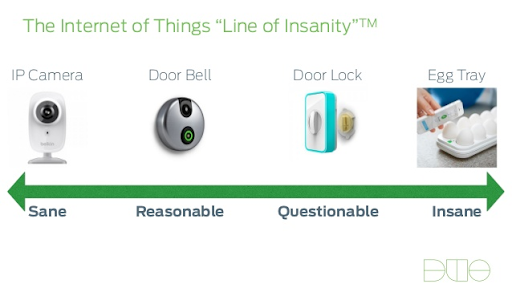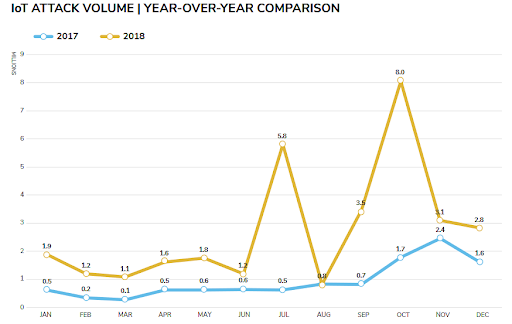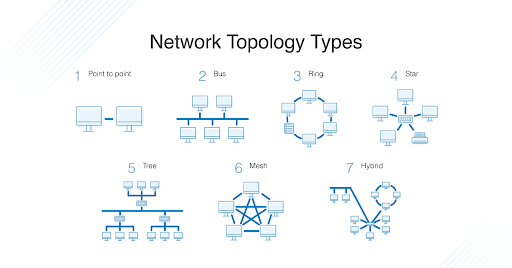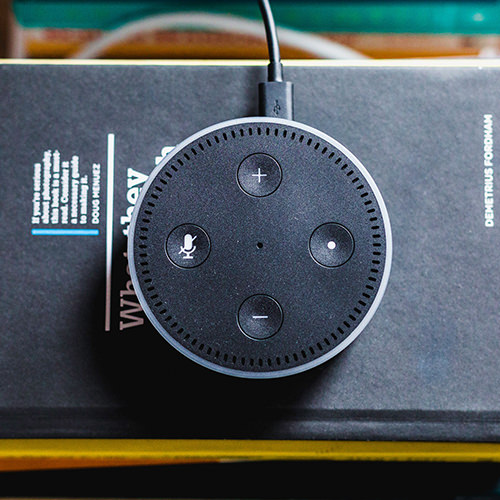Consumer and business spending on the Internet of Things (IoT) is expected to reach $1.3 trillion in 2020, and 1.9 billion smart home devices are expected to be shipped by the end of 2019. The IoT business is booming, and connected technologies are becoming more and more ubiquitous.
As businesses look to capitalize on this growth, it’s important to remember that IoT is more than the “Thing” or “the Internet”. IoT describes systems of devices interconnected to deliver greater value than the sum of their parts. IoT can even enable the transformation of products into services. By collecting information and acting on it (either with human input or AI automation), IoT is transforming and disrupting entire industries. 88% of industry IT leaders believe IoT is “critical” to their business’ success. Yet 76% of IoT projects fail, not even leaving the Proof-of-Concept phase.
No matter your organizational role, understanding the impact of IoT technologies can be challenging. If you’re looking to build IoT-enabled experiences, it’s tough to know where to start. Sure, there are “examples du jour” like inventory management, robotic assistants, or automated checkout. What about opportunities to surprise and delight your customers with a branded experience only you can offer? How are you going to convince wildly different teams in your organization this is the golden path to new opportunities?
Cantina has identified four common conditions that will help businesses considering IoT solutions thrive:
- Having an IoT strategy
- Building systems with privacy & security in mind
- Considering communication methods and interoperability
- Placing customers and employees at the center of their solutions
It doesn’t matter if you’re a marketer, a product manager, a designer, or an engineer. These considerations come into play at every step of prototyping and scaling IoT solutions. Use these to successfully shape your IoT solutions.
Define Your Strategy
It’s now been 22 years since Harvard Business Review published “The Experience Economy”. The trend identified in that article has only been growing: customers no longer buy products, they buy experiences, and they’re spending more and more of their money on them. If they cannot get a memorable experience from you, they’ll find it somewhere else.
Opportunities for delight emerge when we imagine innovative customer experiences enabled by IoT. Instead of long lines for cashiers or expensive self-checkout machines, a store can now know the items a customer is purchasing and automatically deduct them through a mobile payment app. Motion sensors around a store can detect activity over time and provide data to optimize layouts and highlight promotions. Both of these cases are made possible by networks of sensors collecting data to provide insight into physical spaces. Just consider what Toys ‘R ‘Us is doing to transform its new retail locations into data-gathering experience centers.

Realizing these new opportunities and uncovering “what could be” requires experience strategy. Foundational research and workshops can uncover gaps in your current offering, as well as ways to remove any friction or pain points. While there are many technically-feasible business models involving IoT, it is essential to validate whether they provide actual value for your customers. Experience strategy can make the difference between your IoT solution being the next Alexa or Juicero failure. Doing your homework upfront prevents wasted effort building your industry’s version of the smart fridge.

Regardless of whether you’re rolling your own IoT solution or building on top of another platform, your business may find its IoT solution is somehow engaged with a platform. Those platforms may provide services, like Amazon Alexa or machine learning platforms, or they can bootstrap the creation of your IoT solution, like Azure IoT, ThingWorx or GE Predix. Whether you build deliberately for a platform model or not, the nature of IoT solutions means that decisions around the way participants (customers, companies, employees, and more) engage with each other and your IoT solution can determine if your IoT solution encourages more usage or discourages it.
Such platforms flourish when they follow methodologies for encouraging participant engagement to keep customers and employees coming back. Platform strategy activities can help you determine how to build a digital flywheel (where a customer’s continued use of a platform increases engagement and loyalty) to accelerate your business instead of dragging it down.
Secure Your Solutions
IoT products and infrastructure collect a great deal of information companies would otherwise struggle to obtain. It also requires entirely new business processes and systems to make sense of that data. The data-oriented nature of IoT means true value only emerges when companies have:
- Security and privacy maturity to protect data
- Predictive analytics and data management to understand data
- Appropriate network infrastructure and integrations into open platforms to facilitate the flow of data
None of this happens by accident. It has to be baked into design considerations, engineering requirements, and business objectives from day zero.
IoT solutions heavily benefit from the cloud for data storage and manipulation. Fog computing—using edge devices for computation, storage, and communication—extends the cloud, but brings with it new risks and challenges. How do you handle privacy and security when dealing with such systems? As IoT solutions begin to scale, numerous attack vectors (including injection attacks and DDoS attacks) and the hacker’s ability to take over the system from edge devices multiply. The amount of control an individual device is given over the aggregate system impacts the security of the overall network being used by an IoT solution. If an actuator can only receive instructions from the network (and not send anything back), the ability to take over the system will be limited.

Organizations detected roughly 32.7 million IoT attacks in 2018—a 217.5% increase in just one year. Among those attacks, two with devastating consequences include hackers using Alexa and Google voice assistants to eavesdrop in customer’s homes and major flaws allowing pacemakers to be controlled remotely.
Having a plan for monitoring and defending your system, keeping devices and connections secure, and encrypting data and limiting visibility to the rest of the system from edge devices can help to mitigate these challenges.
Communication is Key
A trending topic in systems architecture circles is when a decentralized or a centralized data model is most appropriate. Typically in IoT, a decentralized data model works best because of the benefits at the edge—benefits such as increased speed processing data, better scalability, and improved security. In either case, your IoT solution will have to account for integration and interoperability between the internal and external systems, including any proprietary or open-source platforms the solution will be built upon.
Consider a hypothetical solution for contactless payment. Regardless of the system architecture, it will likely have to interface with billing, analytics, marketing, and other systems, and possibly systems outside your control.
How your IoT solution communicates with itself as well as these other systems is critical. For each IoT solution your team builds, you’ll have to consider how to handle different types of connectivity across the range of Bluetooth, wireless, and wired connections. From an experience standpoint, your UX team will have to determine how to communicate connection status as well as how to implement polling. In the case of polling, how frequently different parts of the network communicate with each other can determine the overall success of the solution.

Different network topologies will determine the type of approach your IoT solution will have to take. If the network is not fully connected, the lack of connectivity and flow of data to other parts of the solution will have to be communicated as part of a system status.
Plan Everyone’s Experience
While an IoT solution with a good experience is one customers and employees alike will use willingly, a feature-rich, well-implemented solution with a poor experience will have your customers looking for their first chance to jump ship. Too often, the parts of the experience facing the business are given reduced priority—or worse, delayed for a “version 2.0” that never happens. More than your average technology, IoT offerings need to be well-designed end-to-end experiences.
Since IoT projects touch teams as diverse as marketing, IT, operations, product, UX, sales, and customer service, sometimes an organization has to change to support this new way of doing business. They may also turn products into services, which can involve new partners and additional investments as new business models develop. More transformational IoT solutions benefit from service design. Service design activities are beneficial for understanding how to organize your company, align touchpoints for customers and employees, and identify opportunities and gaps in your current offerings.
Connecting for Successful IoT Solutions
Let’s say you’ve developed a sound experience strategy that will help you understand your problem space and create new opportunities to disrupt your industry. Your business knows it needs to keep all necessary data private and secure, so that it can safeguard the trust of its customers by providing them control over their data. The technology challenges of implementing your IoT solution are well-defined. And the organization is aligned on the new way of doing business—committed to being a customer-centered, design-driven organization. So, what’s next?
IoT is too big to tackle alone. Everyone from IBM to AT&T to Amazon is looking for partners to make their visions of a connected world a reality. Researching and identifying partners for any of these areas reduces the strain on your business and increases your chances of success. If your business is looking to build an IoT solution, the next natural step is identifying the partners you’ll need to successfully deliver that solution to market.
By following our methodologies, we’ve helped several connected products clients find success: Bose Frames Audio-Augmented Reality sunglasses, Link AKC Connected dog collar, NormaTec recovery equipment for pro athletes, SyncThink Virtual Reality concussion diagnosis, to name a handful. If you’d like to connect our networks, why not reach out?




